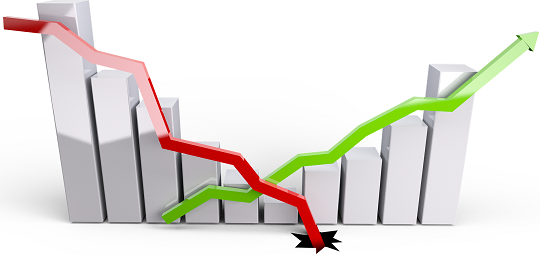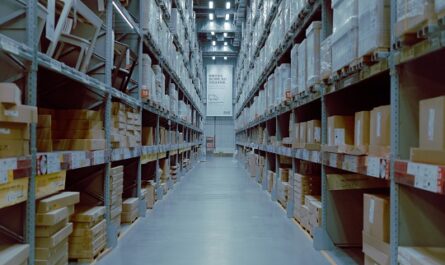When it comes to the supply chain, bad decisions can kill a business. And it was true. We’ll talk about this in this post.
But before we get started, make sure you’ve also joined the scmguide telegram channelso you can keep up with the latest blog posts and learn more about supply chain management.
Table of Contents
Assumptions that have to be made
A company is getting ready to release their new product. They are very confident that the product will do well on the market. All of their calculations are based on the idea that they will make a lot of sales.
Even their own marketing team isn’t sure that sales are that high, which I find interesting. They think the goal is too hard to reach. They think that the number of sales of the new product won’t be more than 40% of what Top Management is aiming for. They told the person in charge of the project about this.
The project owner didn’t listen to them, which was a shame because what they said was backed up by enough data.

The person in charge of the project doesn’t care about what their own team thinks and instead puts their ego first. He still wants the project to be finished. He still believes that sales will be high so that his plan to launch the new product will go smoothly.
Because of this, the marketing team and everyone else on the project have to do what the project owner says. Since they don’t want to lose their jobs, of course.
And they think that, at the end of the day, the project owner is still responsible for how well the product does on the market.
Last but not least, the new product is still coming out on time.
The launch was done with a lot of show. Again, this costs a lot of money.
Based on how much they think the product will sell, they say that it will do well on the market.
You might also like:
- 5 Supply Chain Challenges Before You and How to Overcome Them
- What is a Supply Chain Strategy and How to Develop it Effectively
The first sign that the business would fail
When a new product comes out, it needs a lot of help from all departments. To launch a new product on time, there are many things that need to be ready.
And this company does exactly that.
Production buildings
They have started building new production facilities to make sure there are enough products on the market. To make the project work, they brought in production machines and put them in the factory they had just built.
They are getting ready to use machines with the latest technology to make their work more effective and efficient. Getting these machines is going to cost more than getting the machines they usually use in their production facilities.
All of these choices were made based on the idea that they would be able to sell as much as they had planned.
Place to store things
They did not forget to get ready for the new storage facility. A warehouse big enough to hold everything they need to store.
They built a new warehouse, bought storage racks, and bought tools for moving things around, like hand pallets, forklifts, and so on.
ERP system
They also got rid of their old ERP system because their daily operations were getting more complicated. You already know that it costs a lot of money, time, and work to replace an ERP system.
Coming of global suppliers
Also, they ask some of their global suppliers to invest locally because they are sure that the volume goals they are aiming for will be met.
And these suppliers also spend their own money to build full production, storage, and shipping facilities locally. All to back up the sales volume estimates that their customers gave them.
Getting employees
And businesses need employees to work in them, of course. They also started to hire more employees to help run the new building on a daily basis.
Once the product is out on the market
As soon as the new product came out, everything seemed to be going as planned. At least, it looks like that.
Production went well, and enough of the new product was sent to distributors to meet their sales goal. Everything worked out just fine.
They forgot that the deliveries that happened when the product came out were only meant to fill up the distributor’s inventory pipeline. To fill up the inventory of their shops where they sell sales. Not the sale to the customer in the end.
And sure enough, when the product went on product a few months after the sales’ warehouses were full, the sales numbers were way below what they had expected.

What the marketing team was afraid of in the beginning did happen.
Their products can’t compete with the products on the market already.
All of the big investments they made in the beginning did not pay off.
And the operational costs they have to pay now are too high for such low sales.
They also hired too many people for how little they were making. As a result, many employees are idle. There’s nothing they can do about it. Some of them had to even be fired.
In the end, the business can’t pay for these operational costs any longer. They shut down all of their businesses and fired all of their employees.
There have been a lot of job losses.
What about suppliers?
They came in droves to complain and ask for compensation back for orders that weren’t filled. And that makes a lot of sense because they have invested a lot of money based on how many orders they think they will get.
The company has to pay the compensation, whether it wants to or not. Which makes them lose even more.
Not to mention the trouble they have with their suppliers. No longer can the supplier trust any information they gave them after that.
You might also like:
- 4 Elements for More Effective Supply Chain Management
- Why is it So Important to Have Supply Chain KPI Targets that are Both Realistic and Challenging?
Lessons learned
We can learn several things from the case above:
- It’s important to hear from your employees. They can give you an honest opinion about how the market will respond to a product. Because, at the end of the day, they are “consumers” who, in a sense, speak for the market. They know what they want, and it’s likely that the market will agree. Even more so if your employees really are experts in their fields. That is good information that you shouldn’t pass up. Even though they weren’t heard, the project team still had the courage to say what they thought. You’re lucky to have a team like this.
- Decision makers have a lot to do with whether a business succeeds or fails. You can’t make a decision based on how you feel about yourself as a person. You have to listen to many people with different points of view and solid data to back up their claims.
- Every business decision will affect a lot of different people. Not just to your own company, but also to your employees and their families. Not to mention all of your employees and their families, as well as your suppliers.
- From the supplier’s point of view, they shouldn’t be sure that the number of orders that customers give them is correct. They still need to figure out if their own business will work. Will it make money or not, and what do the long-term prospects look like?
- Supplier must have someone else to sell to. Don’t depend on just one client. Too much would be at stake.
- It’s fine and even important to have high hopes. But you still need to be real. Check again to see if the goals you have for your current project are too high (not realistic) or if you can still reach them.
I hope it helps!
If you think this article is helpful, please share it with your coworkers. Also, make sure you’re part of the scmguide telegram channel so you don’t miss out on new blog posts and can learn more about supply chain management. You can use any of the articles on this blog for whatever you want, even for money-making purposes, without giving credit.

 by
by 

